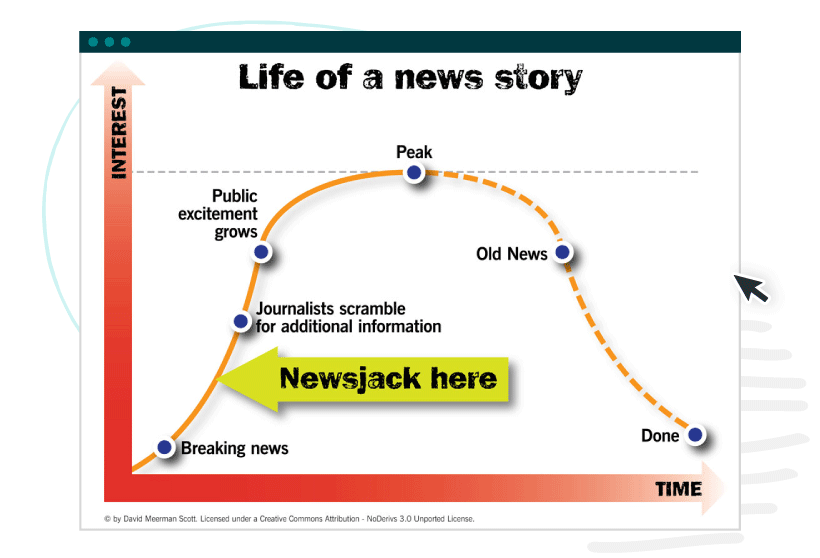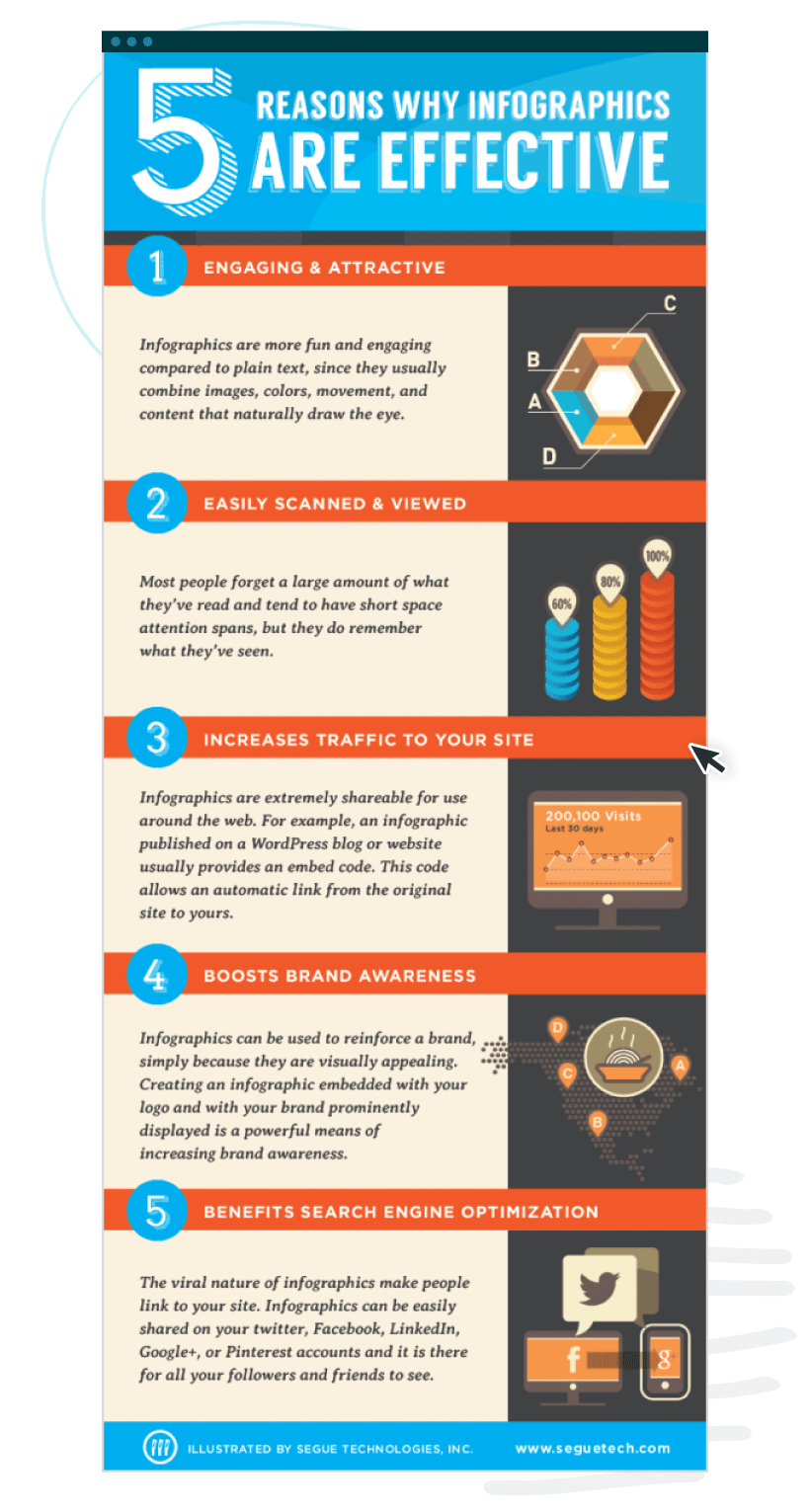Blog posts can come in many different styles, structures, and setups. This is great news for content creators and directors as it means that content can be created to target specific audiences.
Multiple blog post formats also mean that content can be presented in a way in which audiences want to consume it.
7 effective blog post formats to test with your audience
As the internet has grown in use, purpose, and sophistication. So has its content. Successful content creators understand that what they produce can be consumed in a variety of ways, depending on audiences, topics, and content purposes.
This is why different blog post formats have popped up over the years. Understanding these various presentations and how they work can add pizzazz to your content calendar while taking into account what your audience wants to see.
What follows are seven popular blog post formats, what they are, and when to use them.
1. Listicles
If you spend any time on the internet, you’ll likely see the following headlines:
“10 best ways . . .”
“5 reasons why . . .”
“15 of some of the best . . .”
In case you’re wondering, these headlines mean you’re about to read a listicle.
According to Merriam-Webster, the dictionary website, listicles are defined as “an article consisting of a series of items presented as a list.” Pretty straightforward definition. There is a lot of psychology behind why listicles work, but the reason boils down to two things:
- They tap into our ever-dwindling attention span by providing short, concise information
- They categorize information, making it easier to read and digest
When to use: Consider using listicles if:
- You have many topics and an overarching theme
- You want to produce an easy-to-read blog. When you put your listicle together, be sure to use an eye-catching headline, a catchy intro paragraph, and a conclusion that ties everything up.
Be aware: Not all content can automatically be adapted to list formats, nor should it be. Forcing information into lists ensures your piece will be awkward and hard to read.
2. Video blogs/vlogs
Blog post formats aren’t only limited to written content. YouTube officially launched in 2005, providing a 24/7/365 streaming outlet for those interested in using videos to get their points across. From then on, the video blog, or vlog, as it’s known in the vernacular, became popular.
A video blog is just like an editorial blog — except the medium used is video. Vlogs rely on videos that “show” rather than “tell.” And they aren’t found just on YouTube anymore. Other social media platforms (from Facebook to Instagram to TikTok) also make great use of video blogs.
When to use: Turn to vlogging if…
- Your topic lends itself well to visuals and demonstrations
- Your audience skews younger
- You want to improve your SEO efforts
Be aware: While video blogs continue growing in popularity, a poorly produced product will turn off your audience. There is more to creating a video blog than just turning on “record” on your smartphone and talking. Be sure that you have the time, equipment, and editorial production for a great result. Also, be sure you have an engaging narrator/host on hand.
3. Thought leadership
The thought leadership blog post format should demonstrate a writer’s reliable knowledge and abilities in a particular field or area of business. These pieces offer information and insights on trends that are important to audiences. This means the author needs to be up-to-date on what’s going on in a particular industry and that they can discuss issues intelligently and with clarity.
Thought leadership blogs are generally long-form and are ideal for developing an individual’s “street cred” on a particular topic. When a reader is finished reading a thought leadership blog, they have a clearer understanding of a topic or trend. Thought leadership content also builds an audience’s trust when it comes to an author’s opinions and observations.
When to use: Thought leadership blogs are useful when you want to:
- Demonstrate an author’s expertise in a field or industry
- Build trust between the audience and the writer
Be aware: Thought leadership blogs can take longer to create than regular blogs. They should also be presented in a less casual, more formal style. This requires walking the line between “interesting read” and “in-depth expertise.”
4. Newsjacking
Newsjacking lets you take current events and hot topics and share them with your audience. As you share this information, you add your own observations.
The concept of newsjacking was introduced in 2011 by marketer David Meerman Scott in his book, which is appropriately titled: ‘Newsjacking: How to Inject Your Ideas into a Breaking News Story and Generate Tons of Media Coverage.’ Scott’s idea was that marketers who can accurately pinpoint a story just before journalists show interest in it can work that information into their blogs. The result is that the marketers are at the forefront of a particular trend, audiences flock to social media sites or websites to read it, and journalists pick it up.
When used correctly, newsjacking can be a highly important strategy to aid in brand awareness. It also demonstrates to your audience that you’re at the forefront of current events.
When to use: Newsjacking can be highly successful in the following situations:
- Immediately after an interesting piece of news breaks
- Right before a current event becomes a “hot topic”
- When used with your own observations and/or knowledge about a topic
Be aware: News cycle times are VERY short these days. As such, it’s important that you are quick on the draw to write and publish (or produce) the blog in between “breaking news” and “journalists scramble for additional information,” as outlined in the visual below from Scott’s website.
Speaking of visuals…
5. Infographics
Blog post formats can stray from the traditional look as well. Infographics are visual representations of knowledge, with the goal of presenting complex information quickly and easily. Effective infographics can include everything from colorful graphs to well-categorized tables to highly organized material. Infographics arrange a lot of information into easily digestible formats.
Another huge benefit of infographics is that they can solidify your visual brand in the minds of your audience through the use of corporate colors and fonts. Finally, infographics are very shareable. Users that like your visuals can pick them up and copy them to various social media platforms, with a link back to your original website or source.
When to use: Use infographics in the following circumstances.
- You have a lot of data you want to present
- You want to show off your brand standards
- You want readers to quickly understand your information
Be aware: While there are many “easy” infographic platforms out there, developing quality infographics is an art form. As such, they should be created by those who understand the concepts of brand standards and visual placements. Otherwise, you could end up with a cluttered, messy product, which could be a liability.
6. Curated posts
Are you running out of ideas for blog post formats but need to fill your weekly blog quota? Consider curated content for your posts.
Curated content consists of stories or information from other websites that you pick up, redevelop, and share with others. In many cases, turning to curation can prevent you from reinventing a topic wheel. If another website or social media post says something that you want your audience to know about, simply curate it.
To do so, you take that idea, write (or produce) a short snippet, then link back to the original post, article, or video.
When to use: Use curated content when
- You want to share an already published/produced thought or idea with your audience
- There are gaps in your content calendar that need to be filled
Be aware: Be very careful when it comes to curating content. You are, in a sense, “borrowing” that information, not plagiarizing it. As such, it’s important to summarize the content, clearly source where it came from, and ALWAYS provide a link back to the original website or social media platform.
7. Case studies
Like thought leadership pieces, case studies are used primarily for business audiences. Unlike thought leadership pieces, case studies demonstrate how a particular problem is solved rather than detailing expertise.
Case studies outline pain points or problems faced by a client or company, then point out how the author (or author’s company) solved that problem or got rid of that pain point. While case studies are subtle sales pieces, when developed correctly, they offer all sorts of solutions to issues your audience might face. Case studies are an effective blog post format because they let your audience know that you (or your company) have expertise in dealing with, and solving, challenges.
When to use: Create and publish case studies when:
- You want to stand out as an authority on solving a particular problem or problems
- You want to demonstrate to your audience the steps you took to solve a challenge
- You want to subtly inform your audience that you’re a problem-solving expert
Be aware: Case studies are geared toward those who have a problem that you or your company can solve. These are highly useful in business situations, not so much in a business-to-consumer setting.
Many blog post formats, many purposes
As content creators, we’re fortunate that today’s blog posts come in a variety of formats and flavors, which can add color and interest to any content calendar.
So, which blog post format do you use? To answer this question, be aware of your blog’s purpose, understand how your audience consumes content, and be sure you have the resources and skills to do a good job. Once this is all in place, have fun creating!
Learn what blog post formats work best for your target audience by talking to a content specialist at ClearVoice today.












